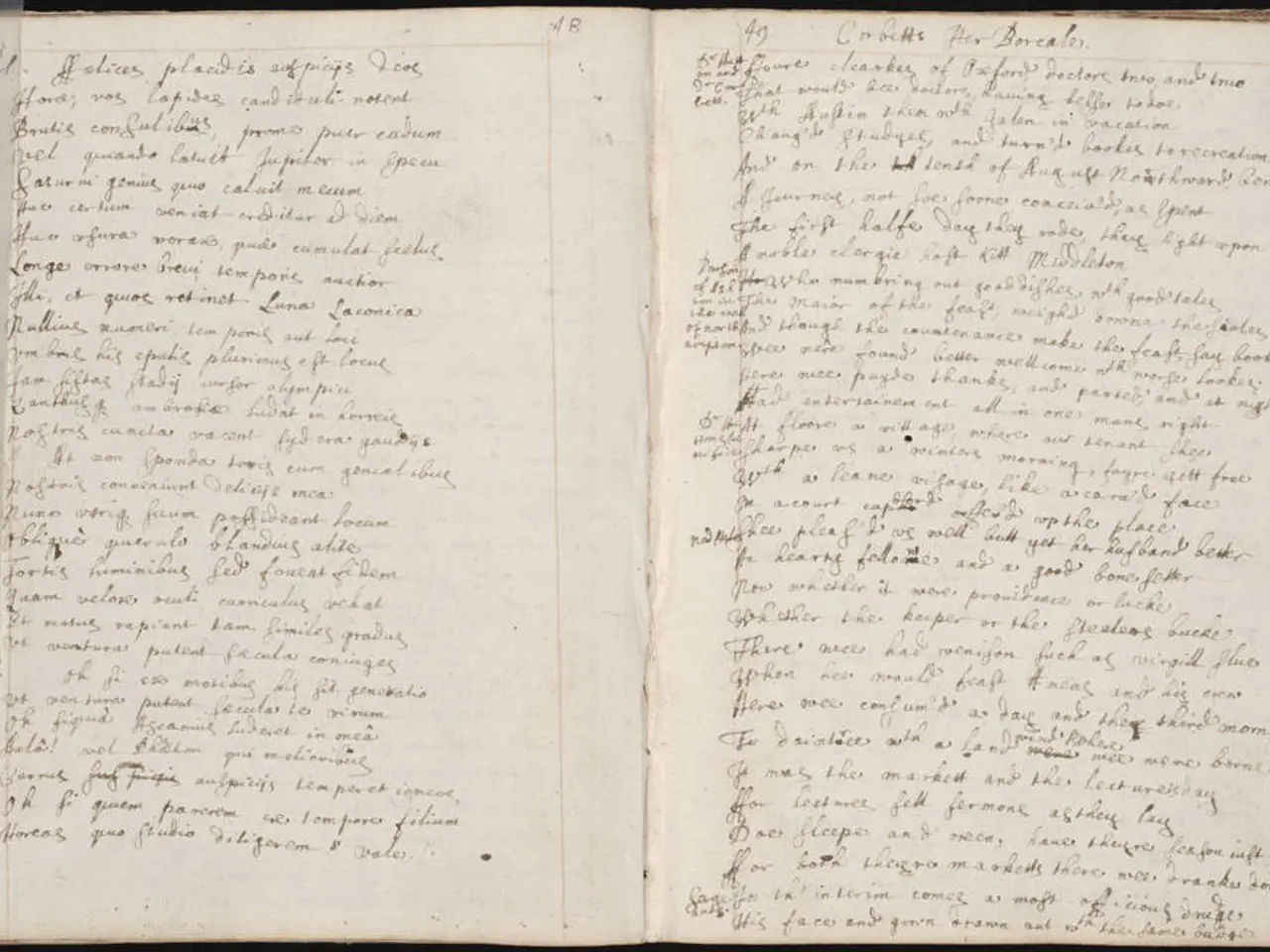Guidance on Implementing Initial Developmental Revisions for Novices
In a quest for a more effective way to revise their work, a writer stumbled upon the 'Frankenstein method', a unique approach that transformed their writing process and resulted in their best work to date.
The method involves a three-document system: the original document, a blank document, and revision notes. The writer copies and pastes the text they are keeping into the blank document, typing in brackets what the change is and how they'll make it. This method actively protects the good stuff and gives the writer targeted places to change.
Once finished, the writer goes back through the story from the beginning and "stitches" the bracketed areas into the story with prose, narration, description, or whatever it is needed to apply the change. This process helped the writer get the throat-clearing prose out of the way and find a simpler, more direct way of saying things.
Initially, the writer received developmental edits and felt like they were given instructions to add a missing vestry to a cathedral, but had no idea how to make the changes without destroying the structure. The Frankenstein method provided a solution, offering a hands-on editing approach that made developmental edits more tangible and manageable.
The writer also learned to discern what their story needed and what it didn't, and threw away a lot of advice, including suggestions from their developmental editor. This newfound confidence allowed the writer to take a step back and ask a handful of people who raved about the initial drafts to review it again and let them know where they deviated from the original premise.
Everyone who reviewed the revised draft told the writer that the changes enhanced the story. The writer is proud of "Pearls," and what it turned into. This experience reinforced the writer's belief that deep down, they knew how the story was supposed to go, and had to actively have faith that their writing process would bring it out.
The writer is open to trying new things when applying revisions and has even found inspiration in resources like editorial guides, professional editing classes, and posts on overcoming writer’s block. By combining these approaches, writers can apply developmental edits more effectively, improving clarity, pacing, and emotional impact as they work on their own drafts.
Engaging in this unique 'Frankenstein method' greatly aided the writer's education-and-self-development by promoting personal-growth through a structured learning process. The method, involving a three-document system, not only facilitated targeted revisions but also assisted in enhancing the writer's story by elevating clarity, pacing, and emotional impact.




